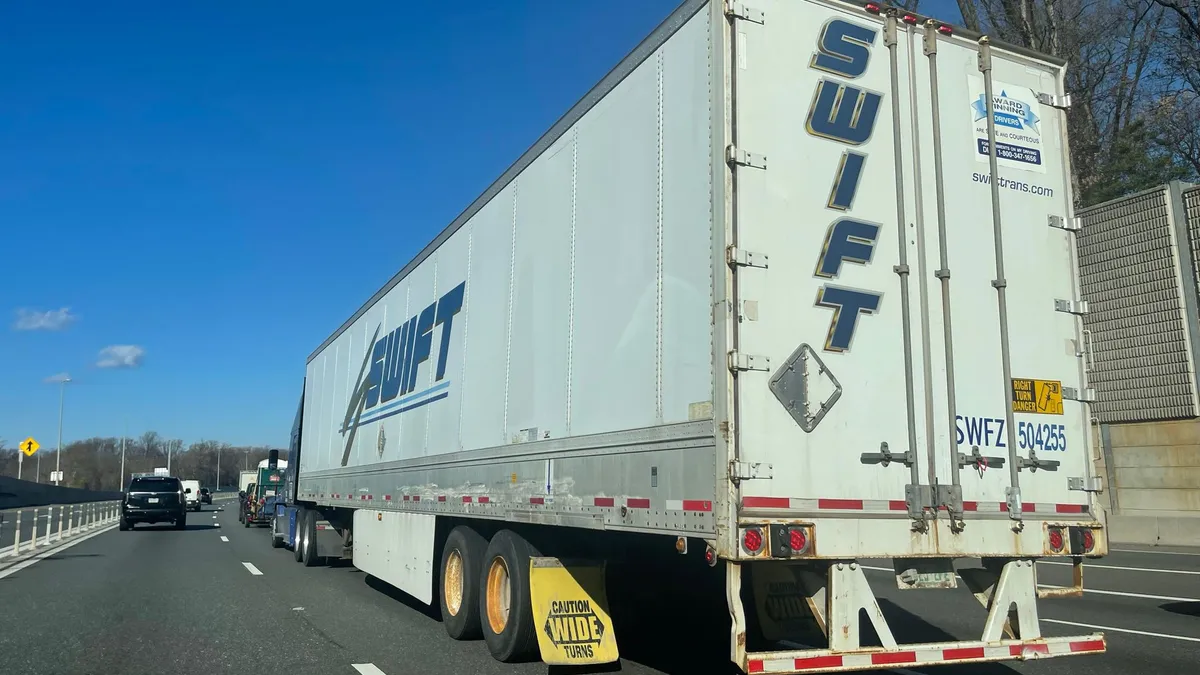Ice cream and frozen pizza aren’t the first things that come to mind when thinking about the cold chain expansion. These food products have been around a long time – a staple for college students, bachelors and parents in need of a quick meal (and treat).
What changed is ice cream and frozen pizza are offered by internet retailer Amazon Fresh, as items that can be delivered to your home in good condition.
And they’re Amazon Fresh’s top selling items, said Rachal Snider, vice president of customer supply chain at third party logistics company AFN and a former senior manager for the customer supply chain at Kraft Heinz, who worked with Amazon Fresh.
These frozen products are a signal that “the need for temperature controlled distribution is getting closer and closer to the customer,” she said.
For Amazon to grow the Fresh Direct and two-hour Amazon Prime Now delivery business, they need access to a cold chain network.
“I believe the acquisition of Whole Foods wasn’t just to gain brick and mortar locations, but to gain the backbones of their distribution and facilitation for Amazon Fresh,” Snider told Supply Chain Dive.
The global cold chain market is expected to reach $271 billion by 2022, using an estimated 7% compounded annual growth from 2017 figures. Big players are getting into the market, with FedEx buying cold chain provider Genco in 2015, and rebranding as FedEx Supply Chain.
The need for temperature controlled distribution is getting closer and closer to the customer.

Rachal Snider
Vice President of Customer Supply Chain at AFN
In fall 2017, Hapag-Lloyd ordered 7,700 air temperature controlled containers (reefers), with 1,000 of them developed to slow the fruit and vegetable ripening process via a “controlled atmosphere” technology.
UPS bought Marken, a pharmaceutical and clinical trial transportation company in 2016.
For biopharmaceuticals, the global cold chain is growing faster than non-cold chain biopharma products, with 70% growth estimated for the cold chain products between 2015 and 2021, and 32% estimated growth for the non-cold chain products.
For pharma companies, maintaining product quality is a huge liability.
Playing catch-up with the cold chain
The cold chain is booming because that’s where the network lagged compared to ambient space.
“That’s where we’re playing catch up,” said Snider. Instead of parceling out inventory into regional warehouses, the trend now is to fragment inventory around the world, to be closer to the customer, shortening transit time.
Of course, Amazon and pharmaceuticals aren’t the only reason for cold chain growth. There’s also climate change.
With average temperatures rising in many parts of the country, shippers are sending more products in temperature-controlled spaces to maintain quality. That includes fruits, vegetables, candy and even gum.
Retail customers can refuse shipped products if they’re not in good condition at arrival. Companies are performing periodic cost analyses to determine whether it’s better to spend extra to ship products via the cold chain, saving money on the back end by avoiding the waste and claims of spoilage and damaged products.
The acquisition of Whole Foods wasn’t just to gain brick and mortar locations, but to gain the backbones of their distribution and facilitation for Amazon Fresh.

Rachal Snider
Vice President of Customer Supply Chain at AFN
With the rise in organic produce, the cold chain plays an important role as well. Organic produce usually costs more and has a shorter shelf life than non-organic produce, said Snider. By shortening the time it takes to get to the consumer, that can decrease spoilage.
Even ports are getting in on the cold chain action.
The port of Virginia is part of a pilot program for in-transit cold treatment. This means South American fruits can be imported into Virginia, instead of routing ships to Northeast ports before they offload the fruit to ship it to southern states.
The Virginia port is now allowed to accept fruit that’s undergone in-transit cold treatment (when the fruit pulp is brought to a specific temperature for a period of time to meet USDA quarantine requirements).
This should lower shipping costs and time, lower customer prices, increase environmental benefits and increase produce shelf life.
Temperature monitoring makes it easier
Temperature tracking capabilities makes it easier to justify spending more for cold chain transport, and in some cases, it’s mandatory.
FourKites, a real-time tracking and visibility software company, launched their temperature tracking capability in June.
“On the food and beverage side, there’s a growing need for fresh produce all through the supply chain, and tracking that with a greater degree of accuracy,” said Priya Rajagopalan, FourKites’ chief product officer.
The Food Safety Modernization Act (FSMA) is a big driver, as it stipulates that for refrigerated foods, temperatures must be tracked in real time, with logs retained for a year.
Retail customers can refuse shipped products if they’re not in good condition at arrival.

Supply Chain Dive
Food companies must be able to show that they maintained the stipulated temperature threshold during the entire trip duration, from the warehouse, to the transport loading, to the distribution center.
The cold chain is getting easier to monitor using software like FourKites’, which gives real-time visibility into container temperatures during travel.
Without this kind of visibility, when a retailer calls the supplier about a problem shipment and food spoilage, the supplier has to call the carrier for the log showing temperature maintenance for that shipment, and wait for the results.
The process is reactionary rather than proactive.
If a carrier uses two-way telematics with wireless capability, shippers can monitor the temperature range on their own shipment, ensuring that their contract stipulations for the proper temperature threshold are met.
A shipper paying for temperature-controlled transportation can then monitor that shipping, just like they monitor the trucks’ location in transit.
If a load is out of the temperature threshold, the system automatically sends alerts to affected parties, like the carrier, shipper quality assurance and tracking team.
With average temperatures rising in many parts of the country, shippers are sending more products in temperature-controlled spaces to maintain quality.

Supply Chain Dive
Some only send out the alert if the temperature is out of the range for a set time period, like 45 minutes.
“This is for fairly high value goods,” Rajagopalan said, as an entire trailer load of goods can cost more than six figures.
If alerted in time, the shipper still has options, like diverting the trailer to the closest cold storage, or sending another truck if the current one has broken down.
For the supply chain manager, this not only increases product quality and decreases product loss, but it improves customer service. Some FourKites’ clients give platform access to their retailers to show that the temperature was maintained throughout the shipment life.
The case of the cold chain s’mores
Adding in a cold chain component can complicate matters. A supply chain manager can encounter difficulty when shipping products that are combined in kits, but can’t be shipped together.
While at Kraft Heinz, one of Snider’s products was a s’mores kit, which included chocolate, marshmallows and graham crackers. In the summer, retailers wanted the products shipped through the cold network so the chocolate wouldn’t melt.
That’s fine, but marshmallows don’t do well in the cold, and they were concerned about marshmallow quality once it got to the retailer.
The Kraft Heinz solution was to maintain the s’mores components in temperature-controlled warehouses, but separate them for transit, shipping marshmallows through the dry network and pairing them up again at the store shelf.
“Little did people know that it wasn’t that easy,” Snider said.





















